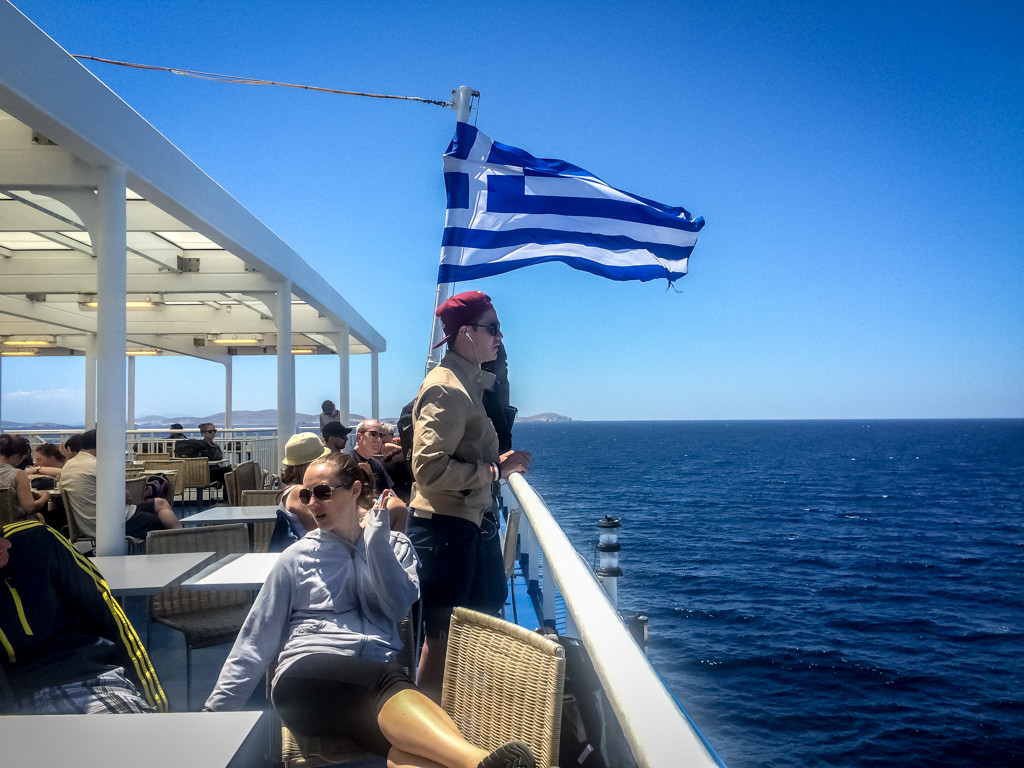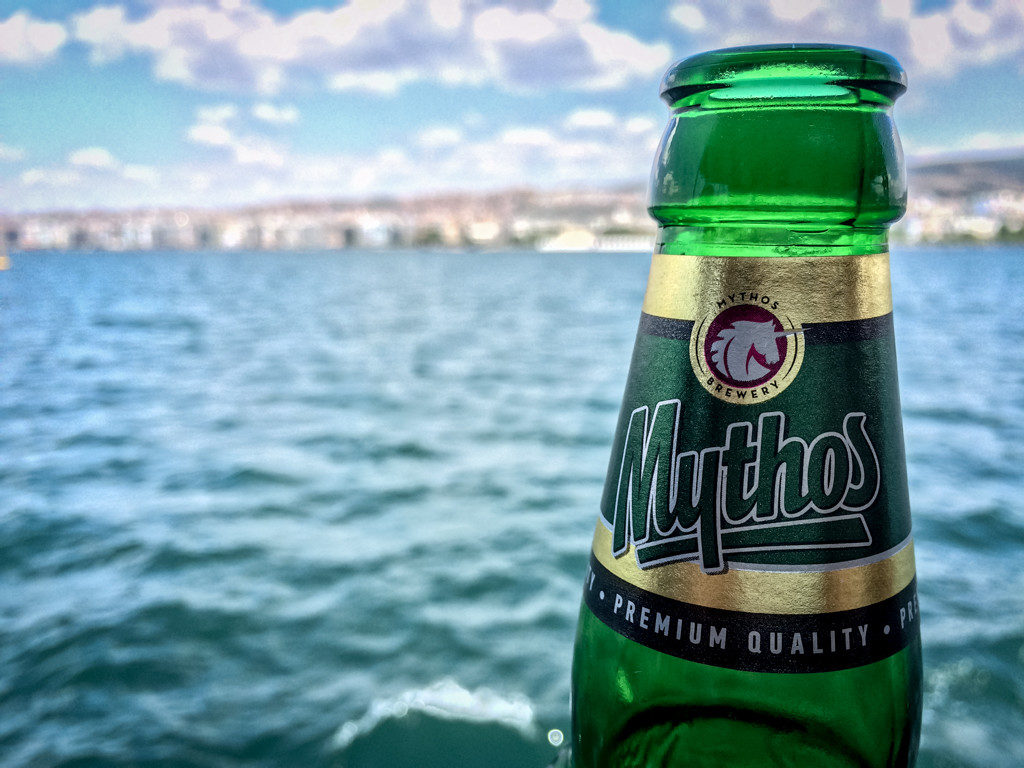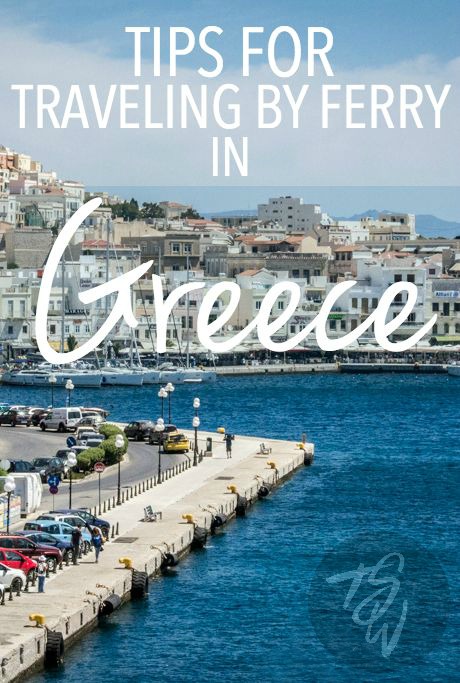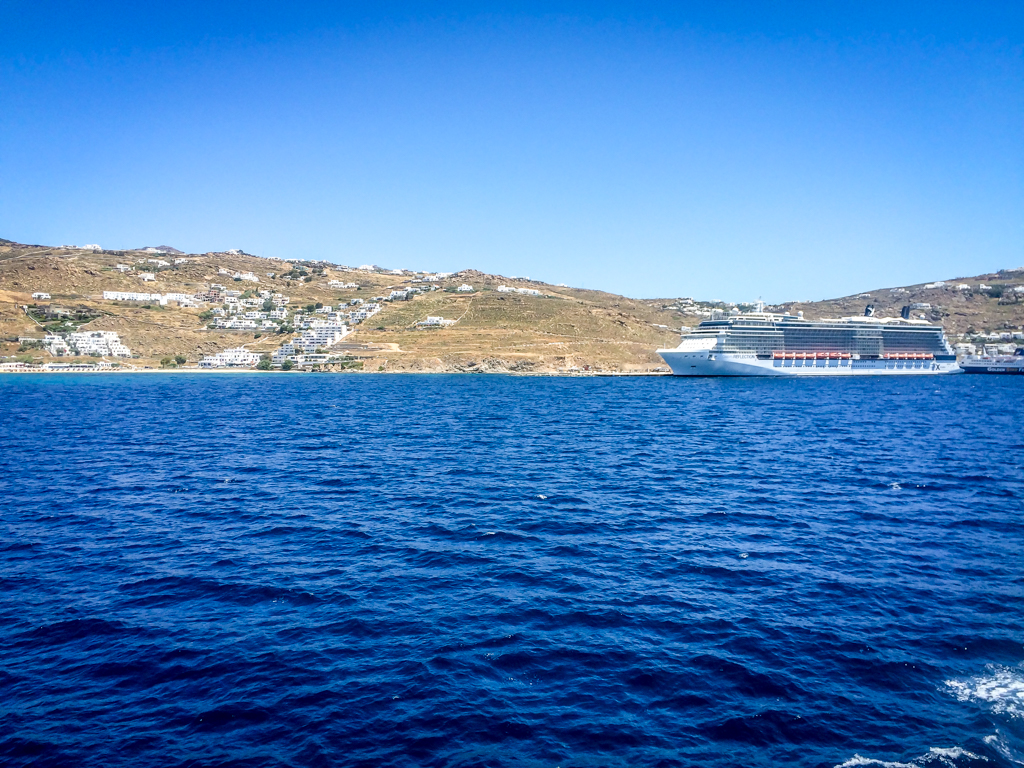Getting around the Greek islands by ferry is surprisingly easy, not to mention fun!
While some of the bigger islands have airports, if you’re planning to visit any smaller islands as well, chances are you’ll end up on a ferry at one point or another.
If your schedule allows for it, I’d say traveling by ferry is the better option anyway. Admiring the islands from the water is a lovely way to spend a couple of hours, in my opinion.
Need help deciding which islands to visit? Read more:
- The Best of the Cyclades Part I: Mykonos, Paros, & Ios
- The Best of the Cyclades Part II: Santorini and Milos
Or read about why I chose to take my mom to Santorini on her first trip overseas.
Tips for Traveling by Ferry in Greece
Choose the right port for departure
There are actually three ports near Athens: Piraeus, Rafina, and Lavrion. Piraeus is the biggest and most trafficked port; most likely, it will be most convenient for you to depart from here, and it’s very easy to reach by public transit. Rafina and Lavrion are farther from the city center, so getting there may require some additional travel time depending on where you’re staying. The trade-off is, they may be closer to the islands you’re heading for, so leaving from one of these ports may cut down your time on the actual ferry or get you a cheaper fare. Just do a bit of research beforehand to know which port best fits your needs.
Book your tickets in advance
There are many options for booking tickets online, but my preferred booking site for ferries was Viva.gr. Don’t bother shopping around for deals–pretty much all sites sell the tickets at the same prices. During low season and shoulder season, you can book at the last minute, but during high season it’s advisable to book as far in advance as you can. Then just pick them up at the port about 30 minutes prior to departure and you’re good to go!
Budget accordingly
Ferries in Greece are not cheap. Truth be told, the islands are damn far from one another, so you’re likely going to spend between 30-80€ to get from one to the next. There are both slow and high-speed ferries available on most routes; the high-speed ferries cost more, but they can often cut your travel time in half.
Sit in the seat assigned to you
Some ferries will have assigned seating, and it’s important to sit in the seat assigned to you if the ferry you’re on is full. If someone is in your seat, politely ask them to move. Otherwise, you may find yourself caught up in a never-ending game of musical chairs, and trust me, it won’t be the fun kind.
Bring snacks and water
You’ll likely have the opportunity to buy these items onboard, but there will be a limited selection and you’ll pay a premium for the convenience. Especially if your trip will last several hours or you’ll want to eat something healthier than cheesy pastries or burgers, it’s a good idea to stock up beforehand.
Be prepared for motion sickness
I didn’t have any problems with this on the slow ferries, but high-speed ferries combined with choppy waters can make for a seriously nauseating ride. If you’re prone to motion sickness, make sure you’ve got a supply of Dramamine handy to take before boarding.
Enjoy the ride
Traveling by ferry in Greece is an experience in and of it itself. Make time to watch the islands float by and enjoy this relaxing leg of your journey. I used my time on the slow ferries to catch up on work or do some reading in between hanging my head over the railing and sighing heavily at the dreamy waterscape in front of me.
Need a place to stay in the Greek Islands? Find the best accommodation deals on HotelsCombined.
Not sure which islands to visit? Read about my experience in the Cyclades island chain; Mykonos, Paros & Ios, and Santorini & Milos.
Pin It!
Have you traveled the Greek islands by ferry? Any great tips to add?



